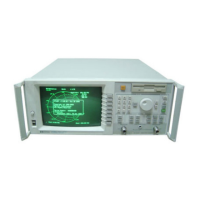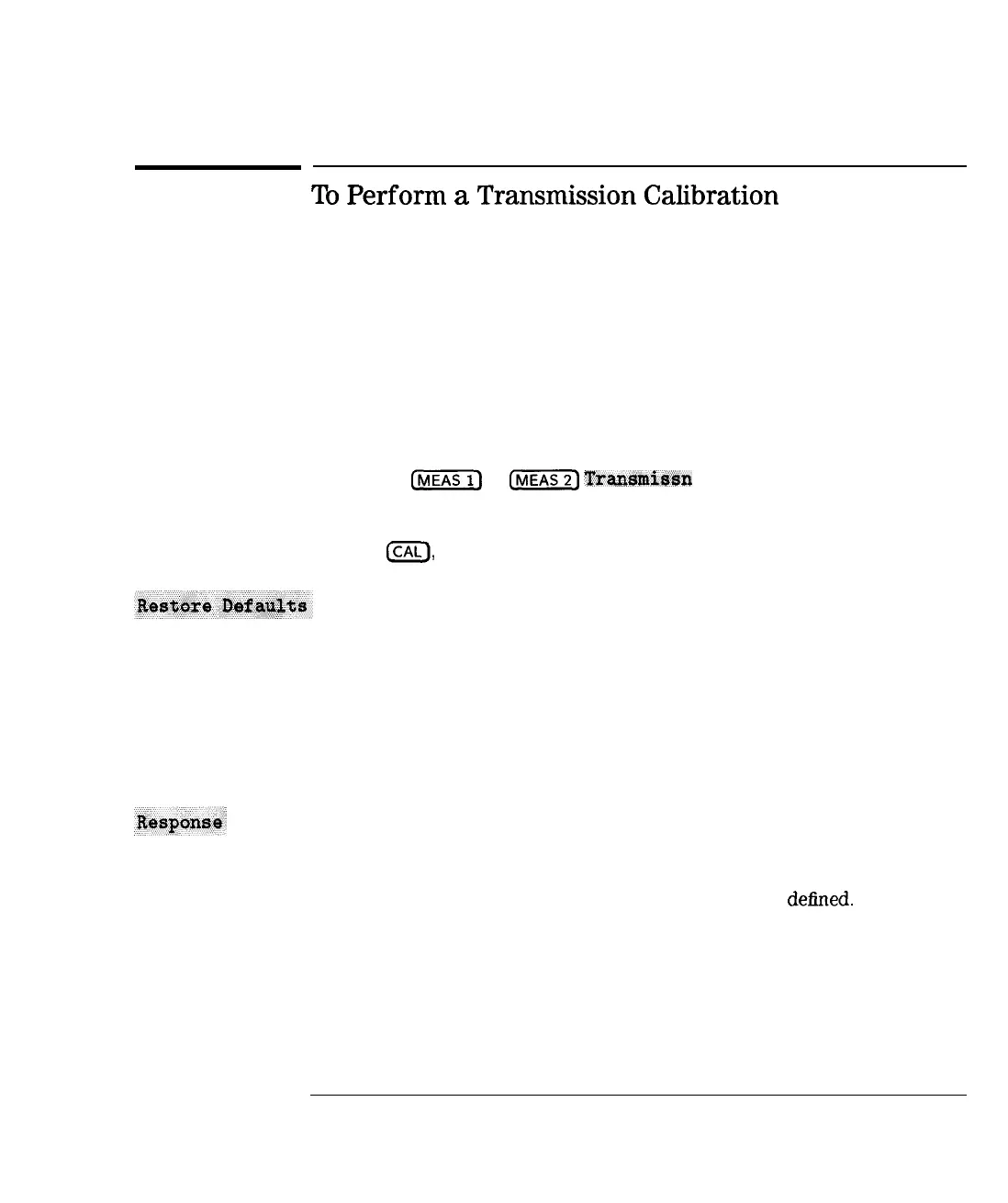Calibrating for Increased Measurement
Accuracy
Choose an Appropriate Calibration Method
To
Perform
a
Transmission
Calibration
Transmission calibrations remove systematic errors caused by frequency
response, isolation and source match. These calibrations are for narrowband
measurements only.
For an example of performing a response calibration for a transmission
measurement refer to “Measuring Transmission Response” in Chapter 3.
Otherwise, follow these general steps when performing a transmission
calibration:
1. Setup the analyzer for your measurement:
l select
(MEAS)
or
($EiE)
Transxai9sa
l
enter operating parameters other than the default
2. Press
a,
and then one of the following softkeys:
Restoring the default calibration recalls error correction arrays that
the network analyzer previously generated by an adjustment test and
permanently stored in memory. This response calibration was performed
at the factory or during servicing using full band (entire frequency span)
and 401 frequency points. It is quick and convenient but not as accurate
at narrow frequency spans. This calibration is also known as the default
calibration.
A response calibration prompts you to connect a through cable as the
calibration standard, and then measures it across the frequency band
you have defined, using the number of points you have
detlned.
This
measurement is used to correct systematic frequency response errors.
6-11

